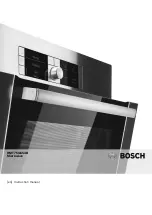
18
Sabine Smart Spectrum
®
Wireless
© 2011 Sabine
, Inc.
Sabine rechargeable battery advantages.
Here are several more good
reasons why you can feel more confident about using rechargeable bat-
teries:
1. All transmitters report two types of battery status information. The first
report is the all-important voltage the battery is supplying. Second,
you’ll know how long the battery has been in use (battery run time
hours). Each receiver channel also receives telemetry information
from its associated transmitter, regarding the battery voltage, and
displays the information in the receiver LCD (see figure 5b). When
the voltage reaches a level indicating an estimated 30 remaining
minutes of useful battery life, both transmitter and receiver automati-
cally flash warnings in their LCD displays. As an alternative means
of anticipating battery depletion, you can check the number of hours
of use, by checking the transmitter LCD display (see Section 4.2.2
and figure 4g), or the Remote Control Software.
2. The handheld microphone clip that we provide with each handheld
transmitter not only holds the microphone — it also can double as
an unobtrusive charger housing. Anytime the mic is parked in the
clip (and the clip is connected to the charger power supply), the mic
is being charged. As an additional safety margin against battery
failure, the mic placed in the powered clip gets its power from the
charger, not the battery, so it will work perfectly even if the battery is
completely dead.
3. Sabine’s intelligent charger circuitry detects the type of battery in
place within the battery compartment, and automatically turns off
the charger if the battery is not compatible with the charger.
4. The Tireless Wireless™ Charger detects when a battery is fully
charged, and turns off the charging cycle.
5. The Tireless Wireless™ Charger prevents futile attempts to resus-
citate dead batteries — if the battery is unresponsive, the charging
cycle is stopped.
6. Beltpack and handheld batteries can be recharged without removing
them from the transmitters. Just connect charger plug to the transmit-
ter jack (see Fig. 4l).
NOTE: In the “most discharged” battery condition, a full recharge may take
up 8 to 12 hours depending on the mA value of the AA batteries used with
the handheld and beltpack transmitter. The charging system will charge a
batteries with a mA value of up to 2500. When in doubt, charge the bat-
teries overnight. Sabine’s battery-protection circuit will shut the charger
down when charging is completed.
Transmitter operation
Turn off transmitter before
changing battery(s).
BEFORE CHANGING BATTERy
Your Sabine True Mobility
®
transmitter
comes with one or more rechargeable
NiMH batteries.
For best results, charge
the battery for at least 8 hours before
using it for the first time.
Please note
that the full charging potential of the bat-
tery will be achieved after the first 5 charg-
ing cycles have been completed.
NiMH rechargeable batteries are highly
resistant to “memory effect,” which affects
some other rechargeable batteries. The
included NiMH batteries will provide more
lifetime charges and longer battery life for
each charge than many other recharge-
able batteries.
FIRST-TIME BATTERy CHARGING
NEDA: 14A
ANSI: 14A
IEC: LR14
Alkaline batteries must be one of following types:
SW70-H1, SW65- & 75-T Transmitters
2 “AA” size (14.5x50.5mm,
• NiMH Rechargeable (Sabine part #: SWBAA2)
• Alkaline: NEDA 14A - ANSI 14A - IEC LR14
• Heavy Duty batteries (NOT recommended)
)
Acceptable Batteries for use with
Handheld & Beltpack Transmitters
IMPORTANT BATTERy INFORMATION
WARNING! DO NOT USE
Alkaline Rechargeable Batteries
Alkaline “AA”
Rechargeable
Batteries
Alkaline
Rechargeable
Содержание SWM6000
Страница 2: ......
















































